Quaker Conflict Resolution in K–12 Schools
Educators in Quaker primary and secondary schools teach students to resolve disputes with their classmates, communicate their views respectfully, and form healthy relationships. Staff of Friends schools hope students will develop lifelong skills that they can use to address tension and societal conflicts. Instruction in conflict resolution and peace studies is often part of other classes that focus on topics such as life skills or religious education. Lessons start with concrete, specific techniques in the early years and move to more complex instruction as students progress through the grades. Teachers who develop conflict transformation curricula draw on the cultures of the societies in which the schools are situated and help students respond to their political contexts.
“We bring students together to take leadership in finding solutions to their social lives,” said Getry Agizah, programs officer with Friends United Meeting in Kenya.
The peace curriculum draws on Kenyan ethical principles, according to Agizah. Students lead their classmates in reflections on their identities and what actions they can take that will make them proud of themselves. Students each list ten positive character attributes that describe themselves, then practice prioritizing them and meditating on them. When students respond inappropriately to an interpersonal dispute, they can ask themselves why they forgot to act like their true selves.
Kenyan Friends schools have peace clubs that involve students in essay writing competitions and debates around issues of conflict and nonviolence, according to Agizah. Students learn to cultivate resilience, to speak truth to power, and to express vulnerability.
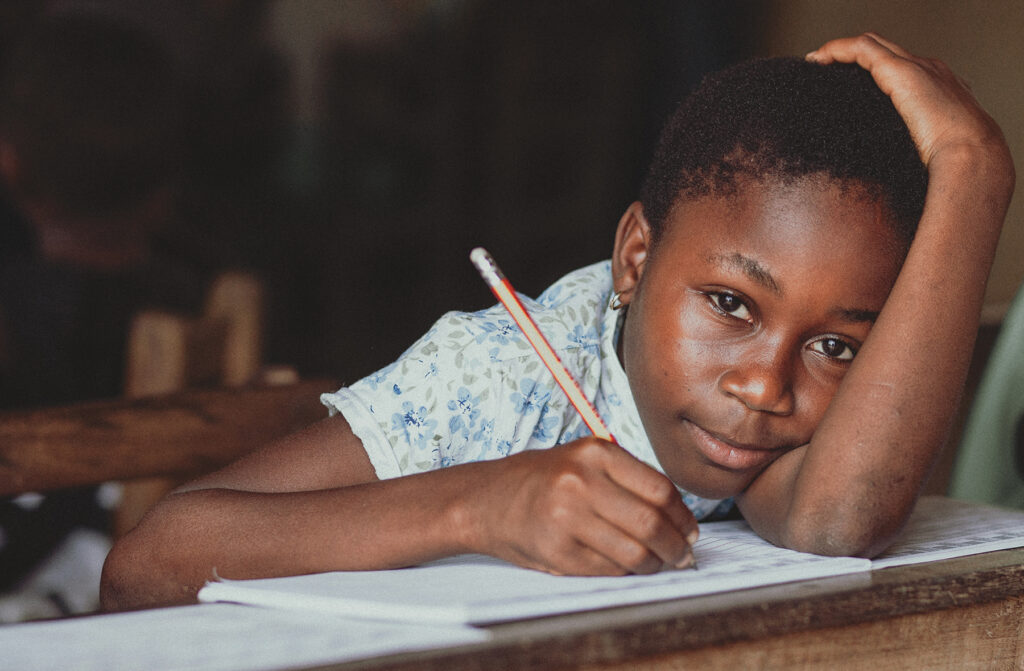
A safe place to express vulnerability and develop resilience is especially crucial for students in the West Bank.
Class gatherings enable children to accept accountability for their part in conflict, while saving face and demonstrating respect for others, according to Adele Eid, deputy principal of Ramallah Friends School’s Lower School.
Eid commented on the challenges they face educating young people in Palestine: “Living under occupation means our students are constantly exposed to a harsh reality where violence and conflict are unfortunately prevalent. This negative model witnessed in their everyday lives creates additional hurdles in teaching and promoting nonviolent conflict resolution strategies. The external factors and constant stressors impact our students’ well-being, making it even more crucial to provide them with the necessary skills to navigate and address conflicts peacefully.”
External factors affect students all over the globe, and conflict resolution programs can help them react peacefully in spite of the stressors they face. Although most students at the Friends School of Atlanta in Atlanta, Georgia, were on track academically, they lacked two years of opportunities for social-emotional learning due to the COVID-19 shutdown, according to Alex Zinnes, who teaches conflict resolution in her world studies class for middle schoolers. When students ask what skillful communication has to do with global studies, she explains that war begins as a result of an accumulation of unresolved international disagreements. Zinnes observed that students did not know how to move through conflict, so she developed what she calls “the skillful communication curriculum” for her seventh graders.
“The genesis of this was seeing some unskillful communication. I attribute it to the pandemic,” Zinnes said.
Zinnes connects instruction about children’s inner monologues during conflict with the Quaker idea of listening to the still, small voice. She leads students to outcomes as they role-play conflict situations, preparing them to negotiate solutions to disputes that arise spontaneously. Much of students’ informal conflict management takes place in settings without adult-supervised structure, such as in the lunchroom and at recess during games, according to Zinnes. The playground game four square is a litmus test for children’s ability to resolve conflict and share power, according to Zinnes.
“That is where they experience a lot of injustice,” Zinnes said.
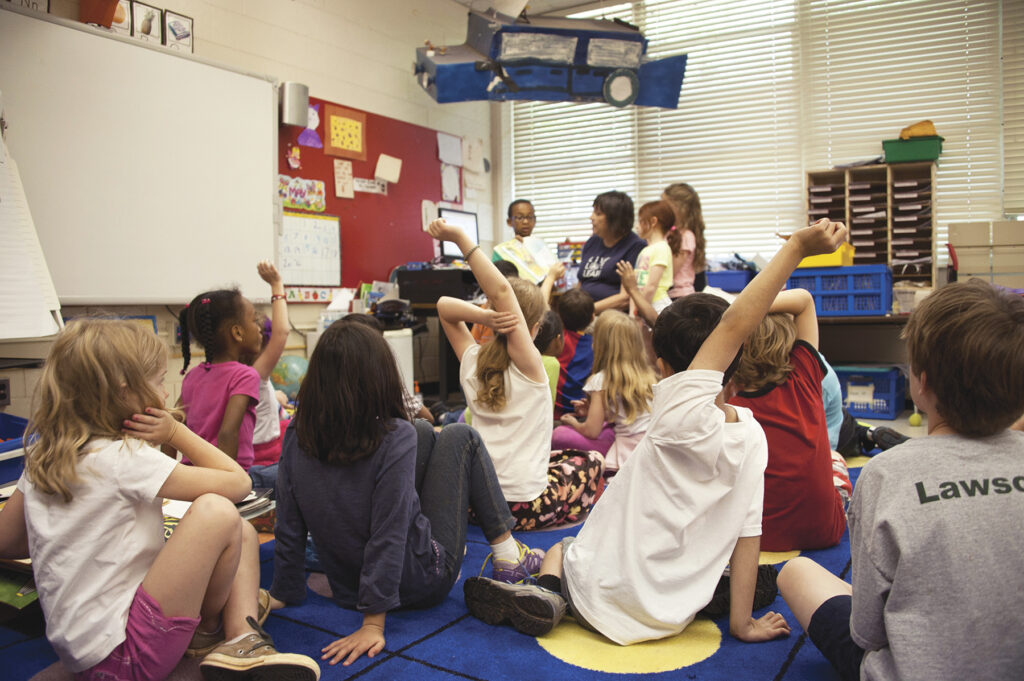
Accepting students’ own understanding of what issues are worth discussing in conflict resolution conferences helps them participate in the process, according to Sara Wayne, assistant head of school at Friends School of Minnesota, a K–8 school in Saint Paul, Minnesota. The 33-year-old school has always had a conflict resolution program and plans to start offering training to other educational institutions in 2024. The program includes daily opportunities for conferences facilitated by trained adult listeners as well as larger group meetings as needed. Students learn to express their perspectives on issues, such as feeling upset that someone cut in front of them in line or experiencing sadness over being excluded from a soccer game at recess. Adults do not minimize the importance of students’ concerns but acknowledge that seemingly small problems reflect legitimate concerns about fairness, exclusion, integrity, and hierarchy. Pupils know from the outset that no one is in trouble in a conference but that all parties are talking to generate solutions.
“It teaches them that they can use their words and ideas to solve conflict,” Wayne said.
Learning the negotiating skills to resolve conflict in class and at play enables students to interact respectfully even when they experience strong emotions. Teachers at Friends schools offer students age-appropriate strategies to address the conflicts they encounter in daily life, with scenarios changing as children grow.
At Greene Street Friends School in Philadelphia, Pennsylvania, which serves students through eighth grade, the conflict resolution instruction is embedded in the life skills curriculum. In pre-K, the students discuss their differences using “talk-it-over chairs,” for example.
“Sometimes the kids will go home and tell their parents that they need to use the talk-it-over chairs,” said Kiri Harris, middle-school learning specialist at Greene Street Friends School.
Young children participate in a feelings freeze dance game and learn to discern where in their bodies their emotions manifest. In addition, students learn to assess the size of problems by using pebbles, rocks, and boulders as metaphors. Boulder-sized problems require adult help. Students can usually solve pebble-sized problems on their own. However, pebble-sized problems can accumulate, and children should address them before they build up. Students also learn about “double-dip feelings”: when they have conflicting emotions.
Students in the upper school at William Penn Charter School in Philadelphia learn such conflict analysis and resolution skills in the school’s classes on world religions, which cover Indigenous faiths as well as Hinduism, Islam, Judaism, Christianity, and Buddhism. In tenth grade, students take a required course in Quaker principles and practices, which contains a unit on peace and nonviolence. Teachers who offer the course help students consider what violence is.
“A lot of us will start by defining violence,” said Tom Rickards, teacher in religious studies and philosophy at Penn Charter, noting that violence includes physical, emotional, and verbal aggression.
Ninth graders take lessons on difficult conversations, which teach them to differentiate facts, feelings, and values, according to Michael LoStracco, chair of the Religious Studies and Philosophy Department.
Teachers also discuss selective service and how to register as a conscientious objector, according to Rickards. School staff offer to house files of supporting documents for students wishing to register as conscientious objectors.
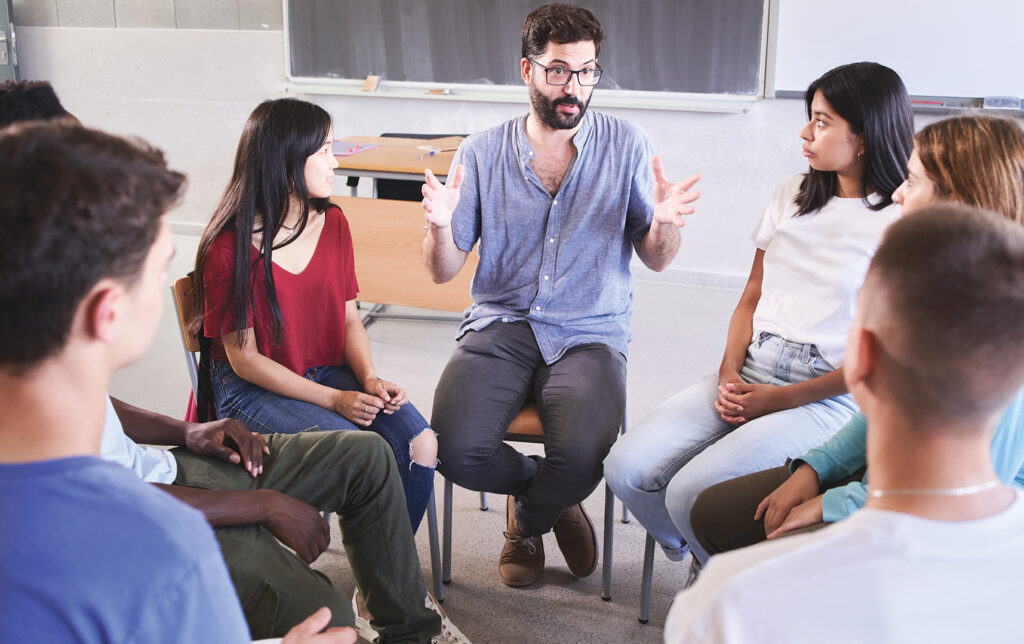
Not only do educators at Friends schools draw on Quaker values to instruct students in nonviolent conflict resolution, they also teach faculty and staff how to discipline students without emotional or physical violence. Started in collaboration with the Psychoanalytic Foundation of the Carolinas, Peaceful Schools North Carolina, a nonprofit led by Quaker educators Ida Trisolini and Christel Butchart, helps public and private schools in the state implement community building and restorative disciplinary practices. Peaceful Schools NC offers coaching and support for teachers and administrators seeking to implement restorative practices and build supportive school communities.
Restorative practices is a segment of the social sciences that focuses on building one-to-one relationships and nurturing community ties, according to the website of the International Institute for Restorative Practices in Bethlehem, Pennsylvania. When applied to disciplinary problems in school, restorative practices focus on supporting students in learning social skills and making amends instead of exclusion and punishment. Indigenous communities have traditionally resolved differences through restorative means.
Some indicators that restorative practices are working in a school include anecdotal reports of decreases in suspensions and happier teachers. Teachers adopting restorative practices hold daily community-building circles, and Peaceful Schools NC facilitators coach them in how to support and include students. In one school where facilitators worked, some teachers resisted the change, believing they had to be intransigent disciplinarians to keep order in their classrooms. One such teacher eventually embraced the change, and later said she considered the year she adopted restorative practices the best year of her career, according to Butchart.
Resistance to restorative practices in other schools stemmed from adults’ belief that following it would take too much time or that it was a low priority, according to Trisolini.
“There are some teachers who don’t quite see the value in it,” Trisolini said.
The most effective involvement of Peaceful Schools NC is when the organization has a multi-year contract to support restorative practices, according to Butchart. She mentioned one school in which the group worked six years in a row, a school that previously had numerous disciplinary problems: for example, teachers would remove students from classrooms for talking out of turn. A new principal took over the school and worked with Peaceful Schools NC to fully adopt restorative practices. Teachers began to use a non-adversarial approach to discipline and asked, “‘How do we support kids when they’re messing up?’” Butchart said.
At the school, detention and suspension rates declined year after year. The students in detention or suspension were mostly new pupils who had come from schools without restorative justice programs. The school primarily served students of Color and received Title I funding. Title I is a federal grant program designed to supplement school district spending to help economically disadvantaged students meet state standards in core subjects. After working with Peaceful Schools NC, during the 2019-2020 school year, there was only one suspension at the school, according to Butchart.
Peaceful Schools NC does not have the staff to compare anecdotal observations with statistical observations by analyzing data on suspensions in the schools it has worked with, according to Trisolini. Schools that have adopted restorative practices often see a significant decrease in incidents of bullying because students develop a sense of empathy and belonging during regular community-building circles.
“All the proactive work can make the anti-bullying almost unnecessary,” Trisolini said.
British Quakers have seen similar results in schools that have adopted peer mediation programs, according to Ellis Brooks, peace education coordinator at Quakers in Britain. Schools that adopt restorative practices and train students to mediate conflicts among their peers report a decrease in sanctions against pupils as well as an increase in class time spent on teaching.
In the 1980s, British Quakers began conflict resolution programs in local schools. These initial efforts have led to a patchwork effort across the country with Quaker charities supporting mediation training in some schools but not in others. Quakers in Britain recently earned a grant from the Quaker-founded Sir James Reckitt Charitable Trust to hire a national coordinator of peer mediation. British Quakers want to bring peer mediation programs to every primary and secondary school in the UK, a tall order when there are about 30,000 schools and only 20,000 Friends in the country, according to Brooks.
The peer mediation programs train pupils to keep confidentiality, practice listening skills, refrain from taking sides, and avoid imposing solutions on the parties in conflict. Students embrace the process because they believe it promotes fair solutions.
“Where it has taken root, it has been a success,” said Brooks.


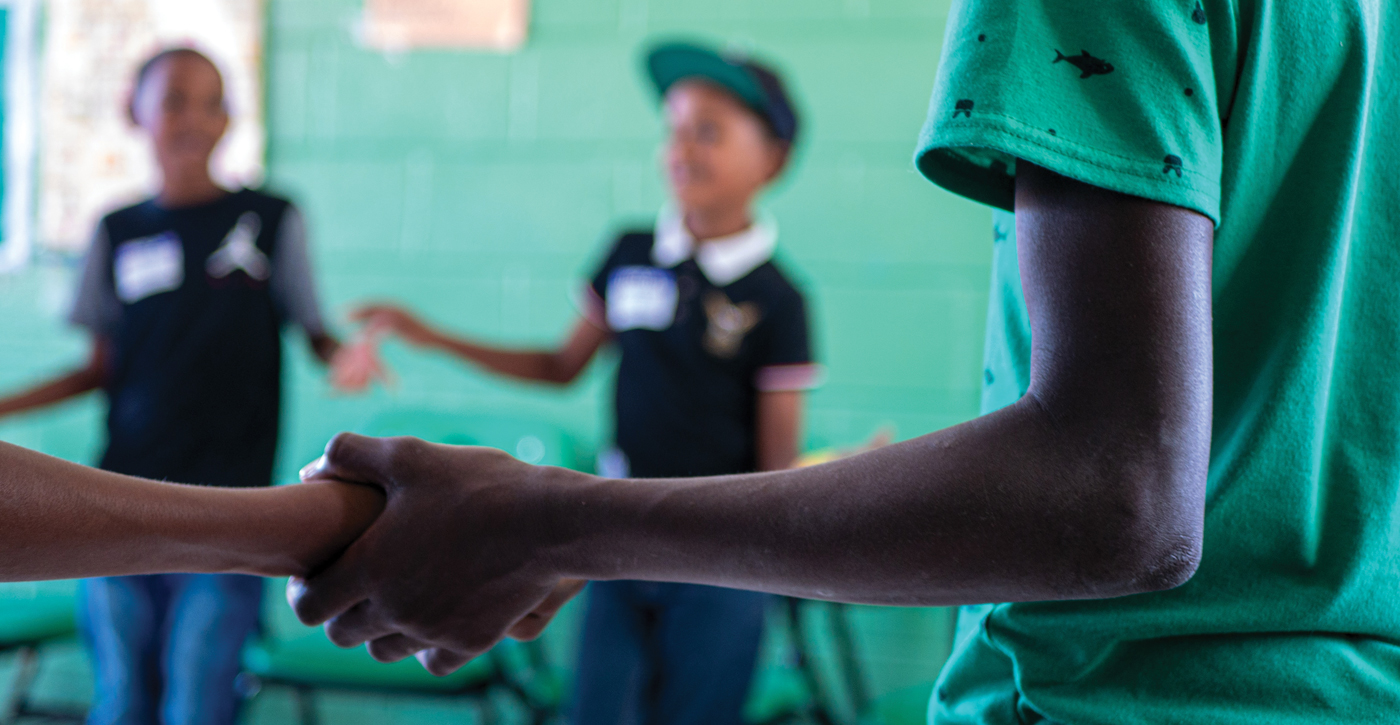
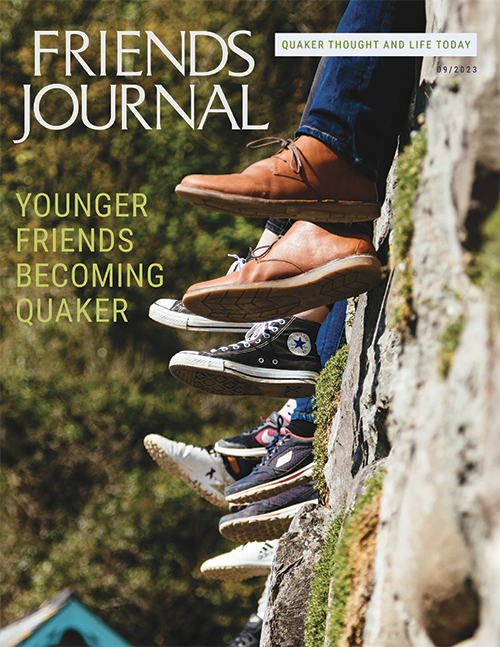
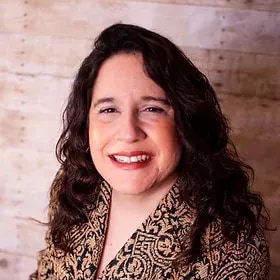
Really nice article and may your conflict resolution needs be few! Where is article to be published? Hugs. Mom